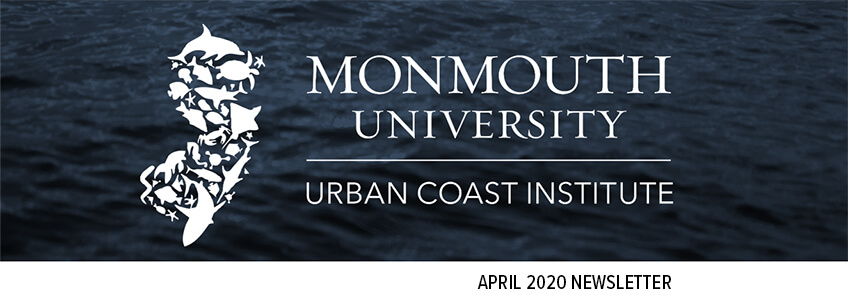
A Message from the UCI on COVID-19 and Our Work
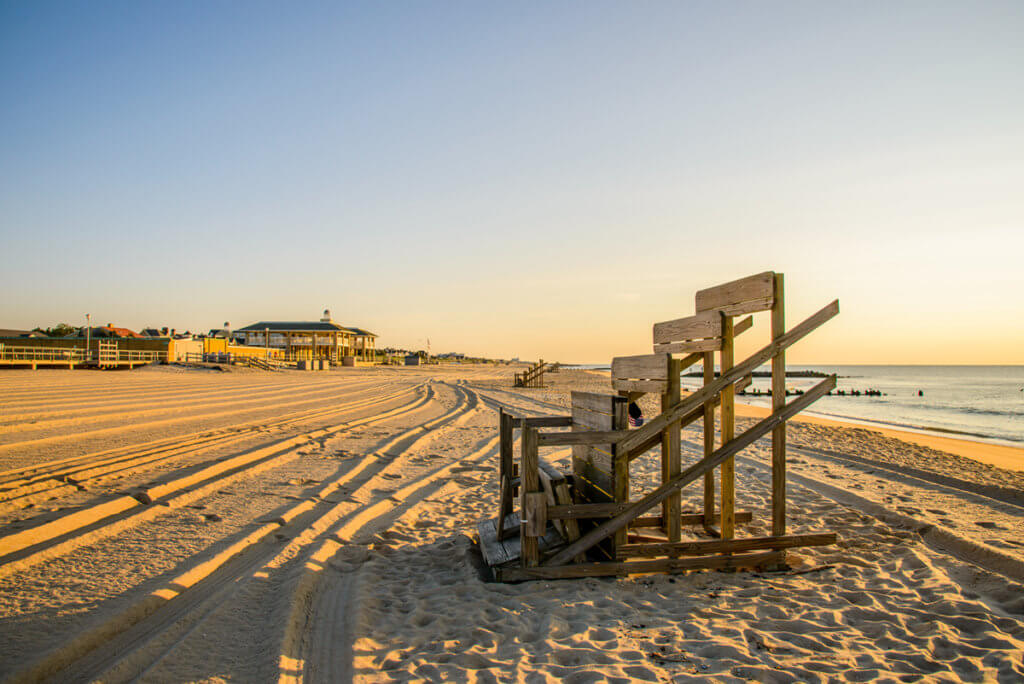
There are sunny days and magnolias are beginning to bloom. More neighbors than I ever knew I had are out walking with dogs, strollers and bundled-up children, in couples, or by themselves, perhaps listening to music. What are they thinking? Many more are at home or being cared for. Special thanks to the teachers, health care workers and public servants on the front lines. Awareness of the personal and professional challenges we each will face in the coming weeks is also an invitation to generosity of spirit and deed.
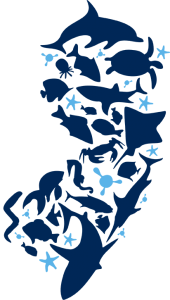
Monmouth University has been proactive. Students, professors and support staff are working hard to deliver classes virtually for the balance of the semester and the summer (see the University’s COVID-19 page for the latest updates). The UCI and other staff are at home working remotely. Although we are in the process of cancelling or rescheduling UCI-sponsored symposia and speakers through May, and most of our field research projects are on pause, we are evaluating alternatives to assure the continuation of our work.
We are still hopeful that UCI will be able to support students and faculty this summer to continue their research and re-engage with our coastal community partners. We will provide you with regular updates and links to information and virtual events that may be of interest. Please do not hesitate to contact us by email if we can be of any assistance. We will follow up as soon as we can.
Finally, a friend recently shared the following quote with me, which seems apropos.
When anxious, uneasy and bad thoughts come,
I go to the sea, and the sea drowns them out with its great wide sounds,
cleanses me with its noise,
and imposes a rhythm upon everything in me that is bewildered and confused.
~Rainer Maria Rilke
All the best,
Tony MacDonald & the UCI Staff
UPCOMING EVENTS
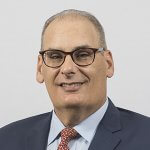
April 8
Webinar: Climate Change and the Voiceless
with Monmouth University Prof. Randall Abate
Hosted by the McGill Journal of Sustainable Development Law
Free & Open to the Public
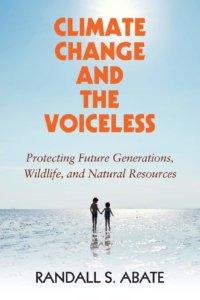
April 13
Climate Change and the Voiceless Book Talk Webinar
with Monmouth University Prof. Randall Abate
Presented by the Pace University Student Animal Legal Defense Fund and Pace Environmental Law Society
Free & Open to the Public
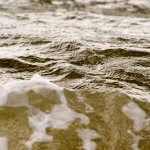
April 14
Mid-Atlantic Ocean Data Portal ‘How Tuesday’ Webinar:
Moderated by the UCI’s Karl Vilacoba
Free & Open to the Public
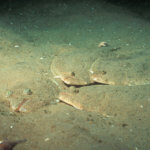
April 22/Earth Day
Mid-Atlantic Ocean Data Portal Webinar:
Moderated by the UCI’s Karl Vilacoba
Free & Open to the Public
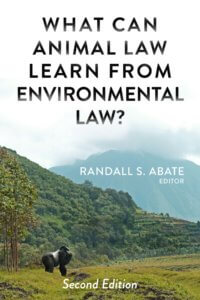
May 12
Webinar: What Can Animal Law Learn From Environmental Law?
with Monmouth University Prof. Randall Abate
Hosted by the Environmental Law Institute
Free & Open to the Public
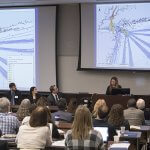
May 19
Second Annual Mid-Atlantic Ocean Forum
Check Forum Site for Details on Virtual Event Plans
Free & Open to the Public
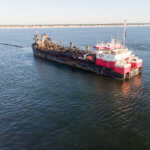
September 24
Rescheduled Beneficial Use of Dredged Materials Conference at Monmouth University
Hosted by Northeast Shore & Beach Preservation Association
See Site for Registration Fees (Free for Students)
In Search of General Washington’s Lost Galley
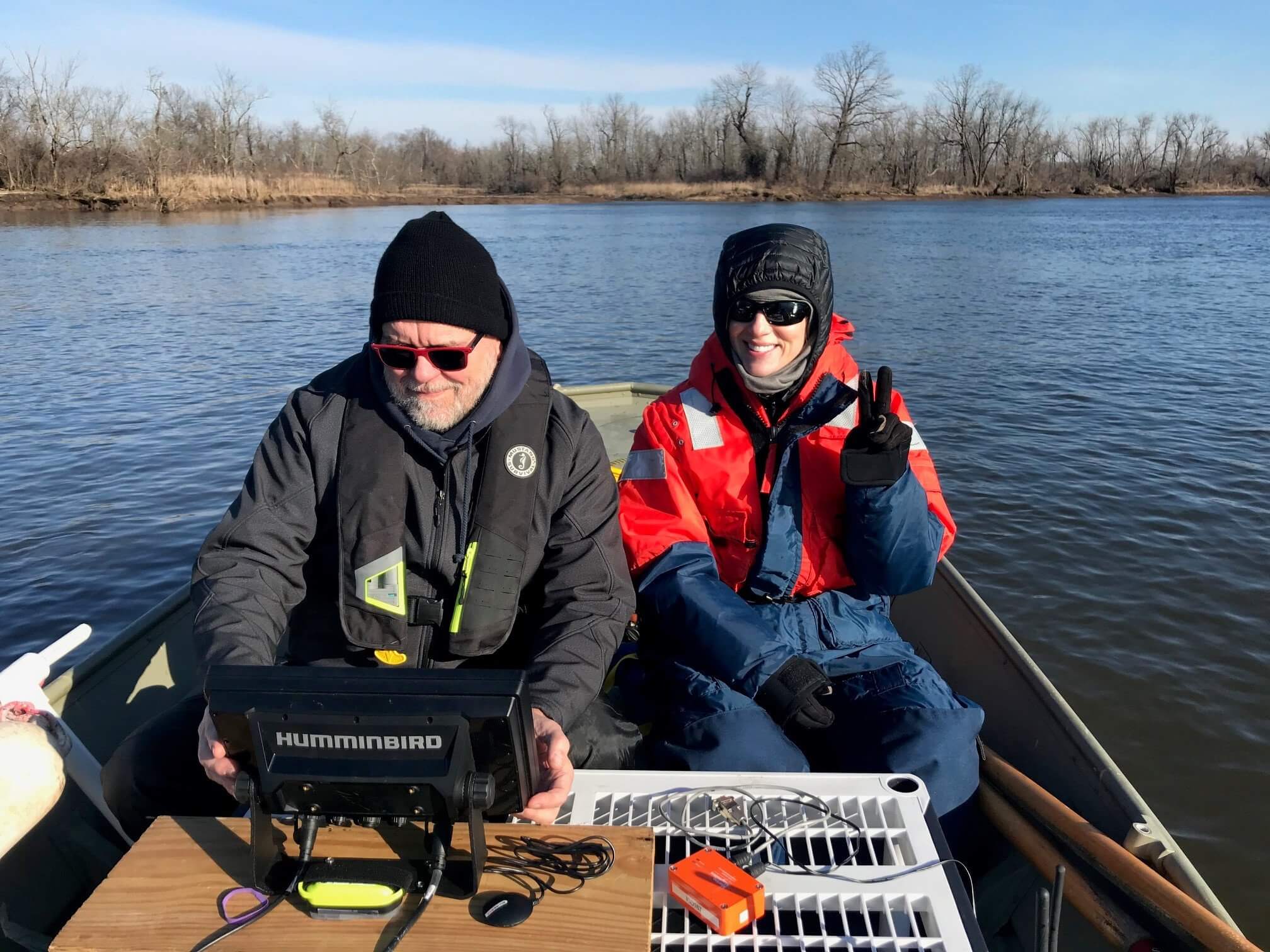
It was the winter of 1777-78 and Gen. George Washington was determined to prevent a critical hour for the Revolution from becoming all the more perilous. The British had just taken Philadelphia and with it control of the lower Delaware River and its maritime supply routes. Now Washington worried the British Navy would seize the modest fleet of merchant ships that had been converted to serve the Continental cause. From his headquarters in Valley Forge, he ordered the ships to be hidden in the creeks that fed the Delaware or destroyed rather than risk them being turned against his army.
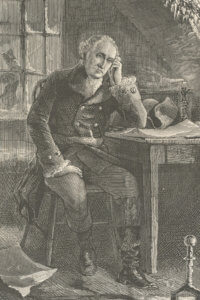
“We can reap no advantage from keeping the Gallies, cannon and stores in such an exposed situation; and if they should fall into the hands of the enemy, which they would in all probability do; the gallies would be useful to them, and the cannon and stores would be no inconsiderable loss to us,” Washington wrote to the Pennsylvania Navy, a forerunner of America’s own.
According to historical documents, dozens of vessels were destroyed by the Continentals and the Redcoats during those months in the vicinity of Crosswicks Creek, located 20 miles north of Philadelphia in modern day Bordentown and Hamilton. When the French entered the war in the spring, the British hurriedly evacuated Philadelphia to bolster the defenses of vulnerable New York City. Washington’s troops took advantage of the moment to pull up many of the wrecks and rebuild them for service. But not all.
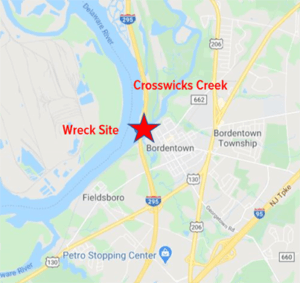
In the 200 years that followed, small sections of one of those wrecks remained visible in Crosswicks Creek during low tides. However, its remains continued to sink in the mud and erode from the elements, and no signs of it had been recorded since the area was surveyed for highway and bridge projects in the 1980s. But the lost wreck has now been found, thanks to the efforts of Jaclyn Urmey, a Monmouth University master’s degree candidate in anthropology.
The search for the historic vessel took on special significance for Urmey, a Naval veteran and social worker at Joint Air Force Base McGuire-Dix-Lakehurst. When Urmey returned to school in 2018 on her GI Bill, she took a marine archaeology course taught jointly by School of Humanities and Social Sciences Associate Dean Richard Veit and Urban Coast Institute Marine Scientist Jim Nickels.
“When I took that class, I fell in love with it and said, that’s what I want to do,” she said. “I never really considered it as a field of study for me before.”
Locating the Wreck
For her thesis, Urmey interviewed regional historians and pored over historical accounts from civilians living in the area and soldiers who fought on both sides of the war in an attempt to learn more about the vessel. Urmey, Veit and Nickels conducted trips to the creek in November and February to map and photograph the bottom aboard boats owned by the University. The UCI has provided funding as well as equipment, vessel and technical support for the project. In the February trip, Stockton University Marine Science Adjunct Professor Steve Nagiewicz joined the crew with additional technology that helped survey the area.
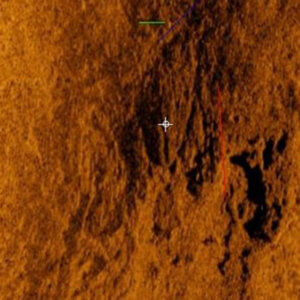
The wreck is located in an area where Crosswicks Creek meets a smaller tributary called Thorton Creek. Side scan sonar imagery (right) shows what appears to be frame timbers from the hull of the approximately 42-foot vessel protruding from a sandbar area in the creek. Urmey estimates only 15% of the ship is still intact.
Based on the wreck’s position close to where the creek meets the Delaware River and signs of charcoal that were discovered in its remains, Urmey believes it was deliberately burned. She said the vessel may have been carrying supplies and fleeing from the British during a two-day raid in May of 1778, ran aground on the sandbar, and was destroyed in place by the British before the Colonials had a chance to hide it.
Urmey’s report also includes information about a second, better-documented wreck located 1,000 feet upstream. Historical records and evidence at the scene indicate the vessel was an approximately 67-foot merchant ship, built for ocean service, that was hidden in the area and sunk by the British during the same raid. She estimated the wreck to be about 60% intact.
Major Philemon Dickinson sent a dispatch to Washington describing the invasion soon after. “With five armed Vessells [sic], & between twenty and thirty flat bottom’d Boats – [British forces] landed at Bordentown & burnt two of Mr Bordens Houses, the two Frigates, & a great Number of other Vessells that were lodged in the different Creeks.”
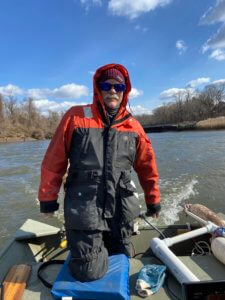
Another source indicated that upon the British approaching, “two Continental galleys lying near the town [Bordentown] were moved up Crosswicks Creek about a half-mile and an attempt made to conceal them in Bard’s (Barges) Creek. One of them was towed up the creek, but the other grounded near its mouth thus revealing their presence. The enemy sent several armed boats up and boarded and burnt them.”
Veit, Urmey and Nickels would like to return to the site during an extreme low tide to see if the wrecks are still visible by eye and conduct drone work.
“One of the nice things about Jacky’s thesis is that it’s bringing this story to light,” Veit said. “It’s a different aspect of the Revolution. You think of Trenton and Princeton and all the terrestrial battles, but there’s a huge naval component to it. It speaks to the Unites States as a young nation trying to build some naval capability in the face of Great Britain, which had the largest and most accomplished Navy on the planet.”
Sea Grant Law & Policy Journal Issue Centers on Monmouth Symposium
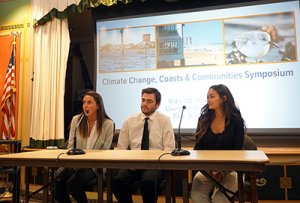
A new issue of the Sea Grant Law & Policy Journal is dedicated to the discussions from the Climate Change, Coasts & Communities Symposium, held at Monmouth University in April of 2019.
The event assembled leading experts from around the world in the areas of climate change adaptation law and science. The symposium was organized by Rechnitz Family/Urban Coast Institute Endowed Chair in Marine and Environmental Law and Policy Randall Abate, who wrote the issue’s introduction.
“With its location just a mile from the ocean, the Monmouth campus offered an ideal setting for a robust discussion of the ‘new normal’ of increased storm events, flooding, sea level rise, and coastal erosion due to climate change and how New Jersey can prepare for the daunting climate adaptation challenges that it faces in the years ahead,” Abate said.
The special symposium issue of the journal contains articles from three of the speakers on pressing climate change adaptation challenges in various contexts. In her article, “Warming Oceans, Coastal Diseases, and Climate Change Public Health Adaptation,” Professor Robin Craig of the University of Utah S.J. Quinney College of Law addresses how a public health-focused, disease risk approach can provide an effective focus for immediate coastal adaptation efforts by addressing real human needs and identifying practical “no regrets” first steps that can advance more general climate adaptation efforts.
Transitioning from U.S.-based to Australia-based coastal climate adaptation challenges, Professor Jan McDonald addresses coastal adaptation planning in her article, “Girt by Sea: Antipodean Lessons in Coastal Adaptation Law.” She observes that there has been significant progress in Australia with precautionary planning and adaptive decision-making. Although entrenched interests continue to favor coastal development and protection of vulnerable property, she notes that these special interests appear to be loosening their grip on coastal adaptation policy.
Finally, in his article, “Envisioning Nature’s Right to a Stable Climate System,” Grant Wilson, Esq., executive director and directing attorney of the Earth Law Center, offers an introduction to rights of nature principles and their potential to help address climate change. He first notes emerging climate change threats and underscores the failure of international law to adequately address climate change. He then argues that the rights of nature movement can serve as a useful tool to address climate change, such as by giving nature a voice at climate change negotiations.
Speaker videos, presentations, bios and other event materials can be found at https://www.monmouth.edu/climate-coasts-communities/. The symposium was hosted by the UCI and Monmouth University’s Wayne D. McMurray School of Humanities and Social Sciences, School of Science, Office of the Provost, Global Education Office, Department of Political Science and Sociology, and Youth Activists Group.
Three Monmouth Students Earn Prestigious NOAA Hollings Scholarships
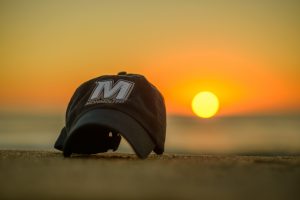
Monmouth University students Aidan Bodeo-Lomicky, Hannah Craft and Johanna Vonderhorst have been awarded the National Oceanic and Atmospheric Administration’s (NOAA) prestigious Ernest F. Hollings Undergraduate Scholarship. Each year, NOAA offers just over 100 of the highly competitive scholarships to students nationwide.
The scholarship was established in 2005 in honor of Sen. Ernest F. Hollings, who was well known for supporting ocean policy and conservation. The Hollings Scholarship includes a two-year academic award, a paid summer internship at any NOAA facility nationwide, and funding for students to present their NOAA research projects at national scientific conferences. The scholarship is open to full-time undergraduates majoring in a NOAA mission field.
Meet the newest Hollings Scholars below.
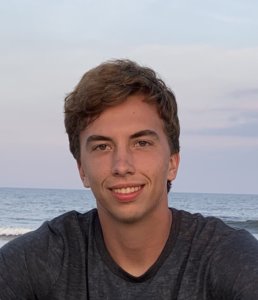 Aidan Bodeo-Lomicky
Aidan Bodeo-Lomicky
Year & Major: Sophomore, Marine and Environmental Biology and Policy, Minor in Political Science
What are your career goals? After law school, I plan on working in the field of environmental law and policy, with a specific focus on marine and endangered species issues.
What are your hopes for the experience as a Hollings Scholar? I hope to get an inside look at how marine policy is created and enforced by one of the world’s premier agencies, as well as make lasting connections in the field.
Where would you like to serve your summer internship? I would like to work with NOAA Fisheries, specifically with the Office of Protected Resources at the NOAA headquarters in Silver Spring, MD.
Hannah Craft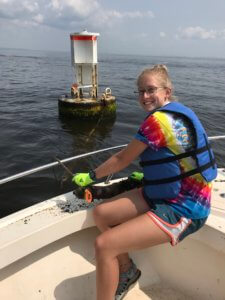
Year & Major: Sophomore, Marine and Environmental Biology and Policy and BS Chemistry Double
What are your career goals? After Monmouth, I plan to serve two years in the Peace Corps working in agriculture or environmental needs. After, I will attend a graduate school and work for my master’s. I hope to get a job in marine research studying invertebrates and how they are influenced and will adapt to climate change. I eventually will work for my Ph.D.
What are your hopes for the experience as a Hollings Scholar? Not only do I hope to gain more knowledge about marine research and methods, but I hope to establish connections with scientists at NOAA who can help me reach my future goals. I also hope to establish friendships with other Hollings Scholars and build lasting connections with them.
Where would you like to serve your summer internship? Anywhere on the ocean! I am looking for a lab that will relate to either marine invertebrates or climate change or both! I would like to go to the West Coast as that is where I would like to attend graduate school. I would also be interested in going to Alaska or the Hawaiian Islands.
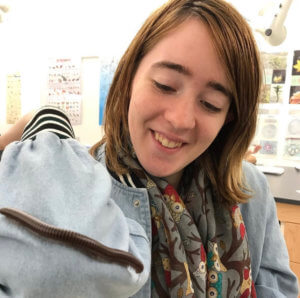 Johanna Vonderhorst
Johanna Vonderhorst
Year & Major: Sophomore, Chemistry
What are your career goals? After graduating from Monmouth, I anticipate attending law school to study environmental law. Following that, I hope to be able to practice in the expanding field of climate change law to seek justice for those impacted most heavily by the effects of climate change.
What are your hopes for the experience as a Hollings Scholar? Through the Hollings program, I hope to gain valuable hands-on climate research experience that will provide me with firsthand information on the state of the earth’s climate situation that I can carry with me into my legal career. If any research is currently being conducted by NOAA regarding methods of tracing carbon emissions to their original source, I would love to get involved with such a project, as one of the major barriers to climate justice cases is an inability to concretely prove direct causation based on the emissions of a specific entity.
Where would you like to serve your summer internship? I would like to serve my summer internship with NOAA’s Office of Oceanic and Atmospheric Research.
Ocean Data Portal Updates: Sea Turtle and Marine Bird Migrations, Port Access Studies and More
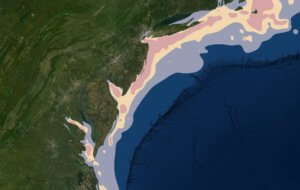
Get a rundown of the latest map additions and tool enhancements in the Mid-Atlantic Ocean Data Portal’s April newsletter, produced by UCI Communications Director Karl Vilacoba. With grant support from the Gordon and Betty Moore Foundation, the UCI serves as a member of the project team that maintains the free and publicly accessible site (portal.midatlanticocean.org) for the Mid-Atlantic Regional Council on the Ocean (MARCO).
Dr. Adolf Jams the Beatles with Blue Hawk House Band
Watch Endowed Associate Professor of Marine Science Jason Adolf and Monmouth University students (including Jason’s son, Max) give a virtual performance of “I’ve Got a Feeling” for the March 30 Tuesday Night Record Club devoted to the Beatles’ “Let It Be” album.
Help on the Way: USNS Comfort Sails Past Sandy Hook
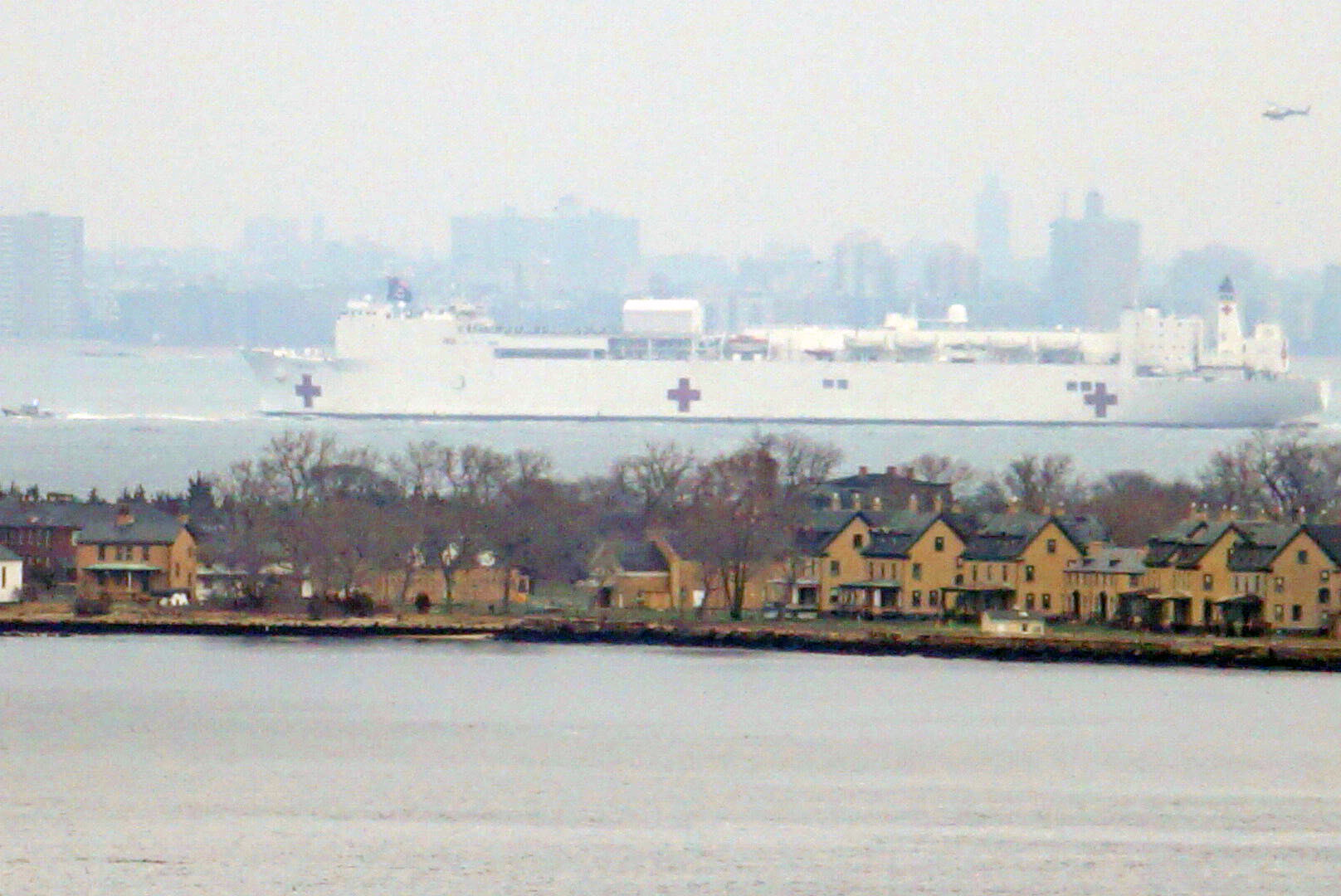
UCI Marine Scientist Jim Nickels captured this photo of the massive USNS Comfort passing Sandy Hook from his home in Atlantic Highlands on March 30. The Navy hospital ship was on its way to New York City, where it is currently being used to assist with the COVID-19 outbreak.
Urban Coast Institute 2019 Annual Report
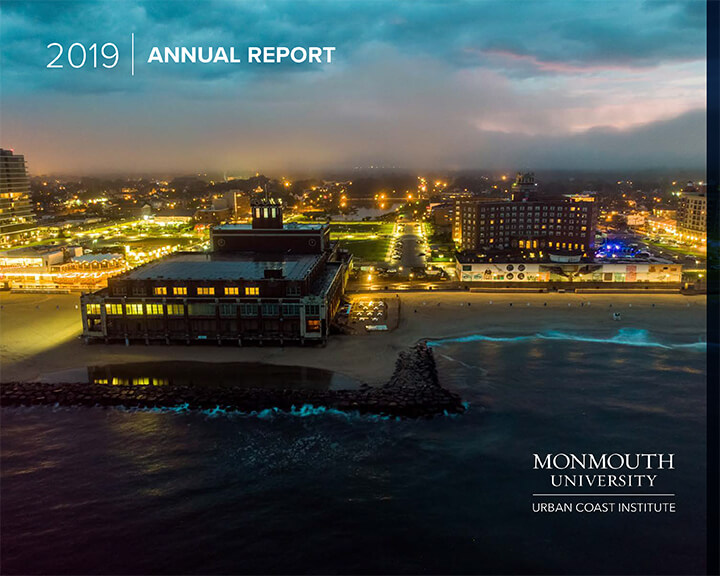
The Monmouth University Urban Coast Institute (UCI) is pleased to present its 2019 Annual Report. Browse its pages for a snapshot of our work over the past year, including the launch of a citizen science initiative to research harmful algal blooms in coastal lakes, efforts to combat marine plastic pollution, a study of water pollution at surfing beaches, and dozens of innovative student-faculty research projects.
View document as:
- Digital Flipbook
- Downloadable PDF (6 MB)
Hard copies can be requested by emailing uci@monmouth.edu.
Also See Our 2019 Highlight Video
In Memoriam: Gordon Litwin
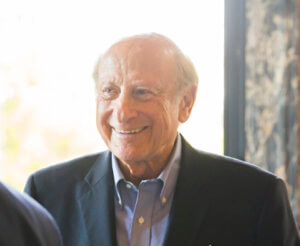
The UCI is deeply saddened to learn of the passing of longtime Advisory Committee member Gordon Litwin. Gordon – a friend and mentor to so many, a father, grandfather and beloved husband — died peacefully at home on April 5. A partner at the law firm of Litwin & Provence, he genuinely lived his commitment to family, colleagues and community every day through his service to numerous nonprofit organizations and causes, his pro-bono environmental work, and so much more. He left the world a better place and challenges us by his example to carry on.
